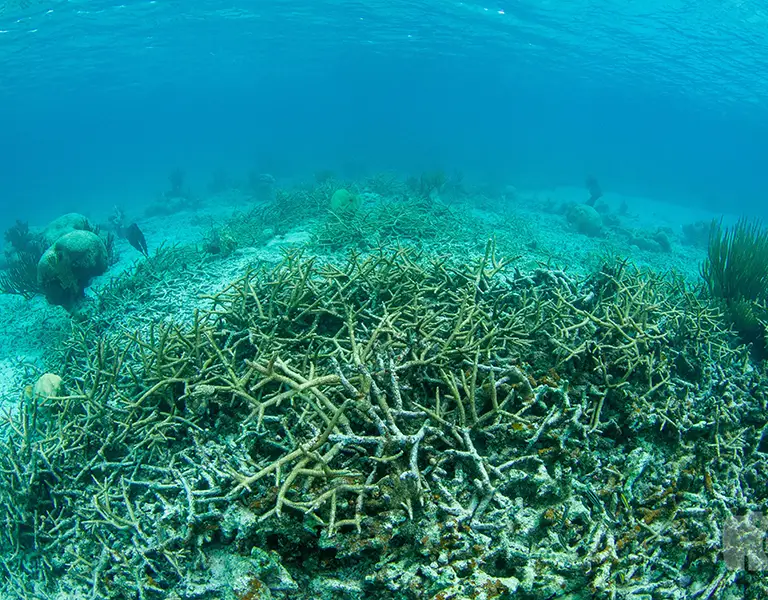Climate adaptation represents one of humanity’s most critical challenges as we navigate an increasingly unpredictable climate. With global temperatures approaching 1.5°C above pre-industrial levels and devastating climate impacts already affecting billions worldwide, the urgency for comprehensive adaptation strategies has never been greater. Building climate adaptability through innovative adaptation solutions offers hope for protecting vulnerable communities while creating opportunities for sustainable development1.
Key Takeaways
- The adaptation finance gap reaches $187-359 billion annually, requiring dramatic increases in funding to meet global climate adaptation needs
- Nature-based solutions provide cost-effective adaptation options, delivering multiple benefits including carbon sequestration, biodiversity protection, and disaster risk reduction
- Early warning systems and national adaptation plans are essential for building adaptive capacity and reducing vulnerability to climate risks
- Climate adaptation must address food security, water resources, and extreme weather events through integrated, community-driven approaches
- Private sector engagement and innovative financing mechanisms are crucial for scaling adaptation solutions beyond public funding limitations
Climate Adaptation
Climate adaptation refers to the process of adjustment to actual or expected climate and its effects. In human systems, climate adaptation seeks to moderate or avoid harm while leveraging beneficial opportunities. For natural systems, human intervention may facilitate adjustment to expected climate and its effects. This comprehensive approach to addressing climate change recognizes that even with aggressive mitigation efforts to reduce greenhouse gas emissions, some level of climate change is inevitable.
The concept of climate adaptation has evolved significantly as our understanding of climate risks has deepened. Today’s adaptation strategies must address both current climate variability and future projected changes, requiring flexible approaches that can evolve with changing conditions. Effective climate adaptation involves reducing vulnerability, building adaptive capacity, and increasing resilience across multiple scales—from individual households to entire nations.
Modern climate adaptation recognizes the interconnected nature of climate risks and the need for systemic responses. Rather than viewing adaptation as isolated interventions, contemporary approaches emphasize integrated strategies that address multiple stressors simultaneously while building long-term resilience.
Climate Change Adaptation
Climate change adaptation encompasses the wide range of actions taken to manage the risks posed by changing climate conditions. These actions span from immediate responses to extreme weather events to long-term planning for gradual changes like sea level rise and shifting precipitation patterns. Climate change adaptation requires understanding how climate hazards interact with social, economic, and environmental vulnerabilities2.
Successful climate change adaptation depends on robust climate science, effective governance structures, and adequate financial resources. The process involves continuous learning and adjustment as new climate information becomes available and as adaptation actions are implemented and evaluated. This iterative approach ensures that adaptation strategies remain relevant and effective over time.
The scope of climate change adaptation extends across all sectors of society, including agriculture, water resources, coastal management, urban planning, and human health. Each sector faces unique climate risks and requires tailored adaptation approaches, yet coordination across sectors is essential for addressing interconnected vulnerabilities.
Climate Change

Climate change represents the long-term alteration of global and regional climate patterns, primarily driven by increased greenhouse gas emissions from human activities. The current rate of climate change is unprecedented in human history, with global average temperatures rising at approximately 1.1°C above pre-industrial levels as of 2024.
The scientific evidence for human-caused climate change is overwhelming, with multiple lines of evidence showing warming temperatures, changing precipitation patterns, rising sea levels, and increasing frequency of extreme weather events. Climate models project continued warming throughout the 21st century, with the magnitude of change depending on future greenhouse gas emissions and the effectiveness of mitigation efforts.
Climate change manifests differently across regions, with some areas experiencing more severe impacts than others. Arctic regions face particularly rapid warming, while small island states confront existential threats from sea level rise. Understanding these regional variations is crucial for developing targeted adaptation strategies.
The pace of observed climate change has accelerated in recent decades, with 2024 marking the hottest year on record globally. This acceleration underscores the urgency of both mitigation and adaptation efforts to prevent the most catastrophic outcomes.
Impacts of Climate Change
The impacts of climate change are already visible across the globe, affecting natural systems, human communities, and economic activities. Rising temperatures have led to more frequent and intense heat waves, affecting human health and agricultural productivity. Changes in precipitation patterns have resulted in both increased flooding in some regions and prolonged droughts in others.
Climate change impacts on ecosystems include shifts in species distributions, coral bleaching events, and forest die-offs from drought and heat stress. These ecological changes have cascading effects on biodiversity, ecosystem services, and human communities that depend on healthy ecosystems for their livelihoods.
Coastal communities face multiple climate change impacts, including sea level rise, coastal erosion, and increased storm surge flooding. These impacts threaten infrastructure, homes, and cultural heritage sites while forcing some communities to consider managed retreat from vulnerable areas.
Agricultural systems experience climate change impacts through changing growing seasons, increased pest and disease pressure, and extreme weather events that can destroy crops. These impacts threaten food security, particularly in regions already facing nutrition challenges.
Urban areas concentrate climate change impacts, with the urban heat island effect amplifying rising temperatures and creating dangerous conditions for residents. Cities also face increased flood risks from intense precipitation events and potential water shortages during droughts.
Adaptation Solutions
Adaptation solutions encompass a diverse range of approaches designed to reduce vulnerability and build resilience to climate change impacts. These solutions include both technological and nature-based approaches, ranging from early warning systems and climate-resilient infrastructure to ecosystem restoration and sustainable land management practices.
Effective adaptation solutions are context-specific, addressing the unique climate risks and vulnerabilities of particular locations and communities. The most successful solutions often combine multiple approaches, creating integrated strategies that address various climate hazards while providing co-benefits for sustainable development.
Adaptation solutions must be flexible and adaptive, capable of evolving as climate conditions change and as new knowledge becomes available. This requires building learning mechanisms into adaptation initiatives and maintaining the capacity to adjust strategies based on monitoring and evaluation findings.
Many adaptation solutions generate benefits beyond climate adaptability, including economic development opportunities, improved public health outcomes, and enhanced environmental quality. These co-benefits can help justify adaptation investments and build broader support for climate adaptability initiatives.
The scaling of adaptation solutions requires supportive policy environments, adequate financing mechanisms, and strong institutional capacity. Successful scaling often involves replicating proven approaches in new contexts while adapting them to local conditions and needs.
Adaptation Actions
Adaptation actions represent the concrete steps taken to implement adaptation strategies on the ground. These actions range from individual behavioral changes to large-scale infrastructure investments, encompassing both autonomous adaptations that occur naturally and planned adaptations that result from deliberate policy decisions.
Priority adaptation actions often focus on addressing the most urgent climate risks while building foundation capacity for longer-term resilience. This includes strengthening early warning systems, improving disaster preparedness, and upgrading infrastructure to withstand extreme weather events.
Community-based adaptation actions leverage local knowledge and social networks to build resilience from the ground up. These actions often prove highly effective because they address locally specific vulnerabilities while building on existing adaptive capacity within communities.
Adaptation actions in agriculture include developing drought-resistant crops, improving water management systems, and diversifying farming practices to reduce climate risks. These actions help maintain food production under changing climate conditions while building resilience in rural communities.
Urban adaptation actions focus on managing heat, flooding, and water security challenges in cities. These include expanding green infrastructure, improving building efficiency, and developing water conservation and stormwater management systems.
Nature Based Solutions
Nature based solutions harness the power of natural ecosystems to address climate adaptation challenges while providing multiple co-benefits for biodiversity, human well-being, and economic growth. These solutions include ecosystem restoration, conservation of existing natural areas, and sustainable management of working landscapes.
Coastal natural solutions, such as mangrove restoration and coral reef conservation, provide highly effective protection against storm surge and coastal erosion. Research shows that natural coastal defenses can be two to five times more cost-effective than traditional gray infrastructure approaches.
Watershed-scale natural solutions address water security and flood management through forest restoration, wetland conservation, and sustainable agricultural practices. These approaches help regulate water flows, improve water quality, and reduce downstream flood risks while supporting biodiversity and rural livelihoods.
Urban natural solutions include green roofs, urban forests, and constructed wetlands that help manage stormwater, reduce urban heat, and improve air quality. These solutions create more livable cities while building resilience to climate impacts.
The Global Commission on Adaptation estimates that mangrove restoration alone can provide benefits exceeding costs by a factor of 10 when considering fisheries, forestry, recreation, and storm protection services. This demonstrates the exceptional cost-effectiveness of well-designed natural solutions.
Implementation of natural solutions requires careful planning to ensure they deliver intended climate benefits while supporting biodiversity and community needs. The IUCN Global Standard for Nature-based Solutions provides guidance for designing high-quality interventions that meet rigorous criteria for effectiveness and sustainability.
Extreme Heat
Extreme heat represents one of the most dangerous climate change impacts, affecting human health, infrastructure, and economic productivity. Heat waves are becoming more frequent, intense, and prolonged as global temperatures rise, creating unprecedented challenges for adaptation.
Health impacts from extreme heat include heat exhaustion, heat stroke, and exacerbation of chronic conditions like cardiovascular and respiratory diseases. Vulnerable populations, including elderly individuals, children, and those with limited access to cooling, face disproportionate risks from extreme heat events.
Urban areas experience amplified heat impacts due to the urban heat island effect, where concrete and asphalt absorb and retain heat. This creates dangerous conditions that can persist through the night, preventing the natural cooling that typically provides relief from daytime heat.
Heat stress affects outdoor workers, particularly those in agriculture, construction, and transportation sectors. Adaptation actions for worker protection include adjusting work schedules, providing cooling equipment, and implementing heat safety protocols.
Infrastructure faces significant challenges from extreme heat, including road buckling, rail track expansion, and power grid stress from increased cooling demands. Building adaptive capacity requires upgrading infrastructure to withstand higher temperatures and managing energy demand during heat events.
Adaptation strategies for extreme heat include expanding urban green spaces, implementing cooling centers, improving building efficiency, and developing heat warning systems. These approaches help protect communities while building long-term resilience to temperature rise.
Adaptation Options
Adaptation options encompass the full range of potential responses to climate change impacts, from low-cost behavioral adjustments to major infrastructure investments. The selection of appropriate adaptation options depends on local climate threats, available resources, and development priorities.
Incremental adaptation options involve adjustments to existing systems and practices, such as changing crop varieties, upgrading infrastructure standards, or improving emergency response procedures. These options often provide immediate benefits while building capacity for more substantial changes.
Transformational resilience strategies involve fundamental changes to systems and practices, potentially including relocation from vulnerable areas, major shifts in agricultural systems, or comprehensive urban redesign. These options may be necessary where incremental approaches prove insufficient.
The assessment of resilience strategies requires considering effectiveness, cost, feasibility, and potential co-benefits or trade-offs. Multi-criteria decision analysis tools help stakeholders evaluate options systematically while accounting for different perspectives and priorities.
Flexible resilience strategies maintain the ability to adjust as conditions change, avoiding lock-in to inappropriate strategies. This flexibility is particularly important given uncertainties in future climate projections and the evolving nature of social and economic systems.
Portfolio approaches to adaptation combine multiple options to address different aspects of climate risk while building redundancy into resilience systems. This diversity helps ensure continued effectiveness even if individual options prove less successful than anticipated.
Food Security
Food security faces mounting pressure from climate change impacts on agricultural systems, with implications for global nutrition and rural livelihoods. Climate change affects all dimensions of food security: availability, access, utilization, and stability of food supplies.
Climate change impacts on food production include changing growing conditions, increased pest and disease pressure, and more frequent extreme weather events that can destroy crops. These impacts threaten both quantity and quality of food production, with particular risks for staple crops that form the foundation of global food systems.
Smallholder farmers, who produce much of the world’s food, often have limited adaptive capacity to respond to climate threats. Supporting these farmers through improved seeds, water management, and market access is essential for maintaining food security under climate change.
Cultivate food crops adapted to changing climate conditions requires developing varieties with improved drought tolerance, heat resistance, and resilience to extreme weather. This includes both traditional breeding approaches and modern biotechnology applications.
Food systems adaptation extends beyond production to include processing, storage, transportation, and distribution systems that must function reliably under changing climate conditions. Building resilience throughout food value chains helps ensure continued food access even when local production is affected.
Nutrition security considerations recognize that climate change affects not only food quantity but also nutritional quality. Rising atmospheric CO2 concentrations can reduce protein and micronutrient content in some crops, requiring adaptation strategies that maintain nutritional adequacy.
Sustainable agricultural practices, including agroforestry, conservation agriculture, and integrated pest management, can build resilience while reducing greenhouse gas emissions from farming. These approaches demonstrate how adaptation and mitigation can be mutually reinforcing.
Climate Resilience
Climate adaptability represents the capacity of systems to maintain essential functions and recover quickly from climate-related disruptions. Building climate adaptability requires strengthening both the ability to withstand climate shocks and the capacity to adapt to ongoing climate changes.
Resilient systems demonstrate characteristics including diversity, redundancy, adaptive management, and strong social networks. These characteristics help systems maintain functionality under stress while enabling learning and innovation in response to new challenges.
Community resilience depends on social capital, local knowledge systems, and economic diversification that provide multiple sources of livelihood security. Strong communities can often respond effectively to climate impacts even when formal support systems are lacking.
Infrastructure resilience requires designing systems that can function under a range of climate conditions while maintaining critical services during extreme events. This includes both hardening infrastructure to withstand impacts and building flexibility to adapt to changing conditions.
Economic resilience involves diversifying economic activities and building financial mechanisms that help absorb climate-related losses. This includes insurance systems, disaster risk financing, and economic growth strategies that reduce dependence on climate-sensitive sectors.
Ecosystem resilience provides the foundation for many other forms of resilience, as healthy ecosystems deliver essential services including water regulation, climate regulation, and disaster risk reduction. Protecting and restoring ecosystems builds resilience across multiple sectors simultaneously.
Measuring climate adaptability requires indicators that capture both the ability to withstand shocks and the capacity for transformation when necessary. These metrics help track progress and identify areas where additional resilience-building efforts are needed.
Early Warning Systems
Early warning systems provide critical information that enables communities and decision-makers to prepare for and respond to climate-related hazards. Effective early warning systems combine hazard monitoring, risk assessment, communication mechanisms, and response capabilities.
Modern early warning systems increasingly rely on advanced technologies including satellite monitoring, weather radar, and sophisticated climate models that can provide forecasts across multiple time scales. These technological capabilities enable more precise and timely warnings that support better decision-making.
People-centered early warning systems ensure that warnings reach all members of vulnerable communities in formats they can understand and act upon. This requires overcoming barriers including language differences, limited communication infrastructure, and social inequalities that may prevent some groups from receiving warnings.
Multi-hazard early warning systems address the reality that communities often face multiple climate threats that may occur simultaneously or in sequence. Integrated systems provide more comprehensive risk information while improving efficiency and reducing costs.
The effectiveness of early warning systems depends not only on the quality of forecasts but also on the capacity of communities and institutions to respond appropriately to warnings. This requires building preparedness capabilities and ensuring that response systems can function effectively under stress.
Climate services support early warning systems by providing climate information tailored to user needs across different sectors and time scales. These services help translate complex climate science into actionable information for decision-makers.
Community-based early warning systems leverage local knowledge and social networks to complement formal warning systems. These community systems often prove particularly effective at reaching vulnerable populations and ensuring appropriate local responses.
National Adaptation Plans
National adaptation plans provide frameworks for countries to assess climate threats, identify adaptation priorities, and coordinate implementation of adaptation actions across sectors and scales. These plans have become essential tools for organizing national climate adaptation efforts.
The development of national adaptation plans involves extensive stakeholder consultation to ensure that diverse perspectives and needs are incorporated into national strategies. This participatory approach helps build ownership and ensures that plans address real-world priorities.
Implementation of national adaptation plans requires strong institutional coordination across government departments and levels of governance. Many countries establish dedicated adaptation authorities or coordination mechanisms to manage cross-sectoral collaboration.
Financing national adaptation plans presents significant challenges, particularly for developing countries with limited fiscal resources. Creative financing approaches, including blended finance mechanisms and results-based payments, help mobilize resources for plan implementation.
Monitoring and evaluation systems track progress in implementing national adaptation plans while building learning mechanisms that enable continuous improvement. These systems help ensure that plans remain relevant and effective as conditions change.
The effectiveness of national adaptation plans depends on their integration with other policy frameworks, including development planning, disaster risk reduction, and environmental management. This integration helps ensure that adaptation considerations are mainstreamed across government activities.
Technical support for national adaptation plan development is provided by international organizations, development banks, and bilateral cooperation programs. This support helps countries build capacity while sharing best practices and lessons learned.
Global Warming

Global warming represents the long-term increase in Earth’s average surface temperature due to human activities that increase atmospheric concentrations of greenhouse gases. Current warming of approximately 1.1°C above pre-industrial levels is already driving significant climate change impacts worldwide.
The rate of global warming has accelerated in recent decades, with the last decade representing the warmest on record. Without immediate and substantial reductions in greenhouse gas emissions, global warming is projected to reach 2.6-3.1°C by the end of the century, far exceeding the Paris Agreement goals.
Regional patterns of global warming vary significantly, with some areas experiencing warming rates well above the global average. Arctic regions are warming at approximately twice the global rate, while urban areas experience additional warming from the urban heat island effect.
The relationship between global warming and climate adaptation is complex, as higher warming levels increase the magnitude of adaptation challenges while potentially reducing the effectiveness of some adaptation actions. This underscores the importance of aggressive mitigation efforts to limit warming.
Tipping points in the climate system could lead to abrupt and irreversible changes that would create new adaptation challenges. These potential changes include collapse of ice sheets, disruption of ocean currents, and large-scale ecosystem shifts that could affect billions of people.
The social and economic costs of global warming increase dramatically at higher warming levels, making early action on both mitigation and adaptation economically beneficial. The costs of inaction far exceed the investments needed for effective climate action.
Sea Level Rise
Sea level rise represents one of the most visible and long-lasting consequences of climate change, posing existential threats to coastal communities and island nations. Global sea levels have risen approximately 23 centimeters since 1880, with the rate of rise accelerating in recent decades.
Multiple factors contribute to sea level rise, including thermal expansion of warming oceans and melting of glaciers and ice sheets. The contribution from ice sheet melting has increased substantially as warming has accelerated ice loss from Greenland and Antarctica.
Regional variations in sea level rise can differ significantly from global averages due to factors including local land subsidence, changes in ocean currents, and gravitational effects from ice loss. Some coastal areas experience rates of relative rising sea levels several times higher than global averages.
Coastal adaptation to rising sea levels includes both protection measures, such as sea walls and flood barriers, and accommodation measures, such as elevating buildings and developing flood-resistant infrastructure. In some cases, managed retreat from the most vulnerable areas may be necessary.
Salt water intrusion from sea-level escalation threatens freshwater resources in coastal areas, affecting drinking water supplies and agricultural productivity. Adaptation actions include developing alternative water sources and implementing salt-resistant agricultural practices.
Small island developing states face particular challenges from sea-level escalation, as entire nations may become uninhabitable within decades. These countries are pioneering innovative adaptation approaches while advocating for aggressive global mitigation efforts.
Economic impacts of sea-level escalation include damage to coastal infrastructure, loss of land value, and increased insurance costs. Early adaptation investments can significantly reduce these long-term costs while protecting communities and economies.
Adaptation Measures
Adaptation measures encompass the specific interventions implemented to reduce vulnerability and build resilience to climate change impacts. These measures span across sectors, scales, and types of interventions, from individual behavioral changes to large-scale infrastructure projects.
Structural adaptation actions involve physical modifications to infrastructure, buildings, and landscapes to better withstand climate impacts. Examples include flood barriers, hurricane-resistant construction, and drought-resistant water supply systems.
Non-structural adaptation strategies focus on policies, planning, and institutional changes that build resilience potential without requiring major physical interventions. These include land use planning, building codes, insurance mechanisms, and education programs.
Ecosystem-based adaptation strategies leverage ecosystems to provide protection and build resilience while supporting biodiversity and ecosystem services. These measures often prove highly cost-effective while providing multiple co-benefits.
The selection of appropriate adaptation strategies requires careful assessment of local risks, vulnerabilities, and available resources. Multi-criteria decision frameworks help stakeholders evaluate trade-offs and select measures that provide the greatest net benefits.
Implementation of adaptation strategies often requires coordination across multiple stakeholders and governance levels. Successful implementation depends on building partnerships, securing adequate financing, and maintaining long-term commitment to adaptation goals.
Monitoring and evaluation of adaptation actions helps ensure they achieve intended outcomes while identifying opportunities for improvement. This learning process is essential for building knowledge and improving future adaptation efforts.
Human Health
Human health faces significant risks from climate change impacts, including direct effects from extreme weather events and indirect effects through changes in air quality, water resources, food security, and disease patterns. Building health system resilience is essential for protecting population health under climate change.
Heat-related health impacts include heat exhaustion, heat stroke, and exacerbation of chronic conditions. Vulnerable populations, including elderly individuals and those with limited access to cooling, face disproportionate risks that require targeted adaptation interventions.
Climate change affects patterns of vector-borne diseases by altering the geographic range and seasonal patterns of disease vectors like mosquitoes and ticks. Adaptation strategies include strengthening disease surveillance systems and implementing vector control programs.
Air quality impacts from climate change include increased ground-level ozone formation and longer wildfire seasons that affect respiratory health. Adaptation strategies focus on improving air quality monitoring and providing health protections during poor air quality episodes.
Water-related health risks increase with climate change through more frequent flooding, drought-related water scarcity, and potential degradation of water quality. Adaptation strategies include strengthening water treatment systems and improving flood preparedness.
Mental health impacts from climate change include trauma from extreme weather events, anxiety about future climate threats, and displacement-related stress. Building mental health resilience requires strengthening psychological support systems and community coping mechanisms.
Health system adaptation involves building capacity to respond to climate-related health emergencies while maintaining essential health services during climate disruptions. This includes emergency preparedness, facility climate-proofing, and workforce training.
Greenhouse Gas Emissions
Greenhouse gas emissions remain the primary driver of climate change, making emissions reduction essential for limiting future warming and reducing adaptation needs. However, even with aggressive mitigation efforts, some adaptation will be necessary due to emissions already in the atmosphere.
The relationship between emissions and adaptation is complex, as higher emission scenarios require more extensive and costly adaptation actions. Early action on emissions reduction can therefore reduce long-term adaptation costs while helping avoid the most severe climate impacts.
Carbon dioxide represents the most significant greenhouse gas, accounting for approximately 76% of total emissions. Reducing CO2 emissions requires transformation of energy systems, transportation, industrial processes, and land use practices.
Methane emissions, while representing a smaller share of total emissions, have particularly potent warming effects and shorter atmospheric lifetimes. Reducing methane emissions can provide relatively quick climate benefits while complementing longer-term CO2 reduction efforts.
Nitrous oxide emissions primarily result from agricultural practices and fossil fuel combustion. Adaptation strategies in agriculture often provide opportunities to reduce N2O emissions while building resilience to climate effects.
Emissions reduction efforts can provide co-benefits for adaptation by reducing air pollution, improving energy security, and creating economic opportunities in clean technology sectors. These co-benefits can help justify climate action while building broader support for climate policies.
The concept of “net-zero” emissions has become central to climate policy, requiring that any remaining emissions be balanced by equivalent removals from the atmosphere. Achieving net-zero will require both dramatic emissions reductions and scaling of carbon removal technologies.
Developing Countries
Developing countries face particular challenges in climate adaptation due to limited financial resources, weak institutional capacity, and high exposure to climate threats. These countries often contribute least to global emissions while facing disproportionate impacts from climate change.
The adaptation finance gap is particularly acute for developing countries, with estimated needs of $187-359 billion annually compared to current international public finance flows of approximately $28 billion. This enormous gap constrains adaptation efforts and increases vulnerability to climate effects.
Capacity building represents a critical need for developing countries seeking to strengthen climate adaptation. This includes technical capacity for climate risk assessment, institutional capacity for planning and implementation, and financial capacity for accessing and managing adaptation funds.
Technology transfer can help developing countries access climate adaptation technologies while building local capacity for innovation and manufacturing. South-South cooperation increasingly complements traditional North-South technology transfer mechanisms.
Many developing countries possess valuable traditional knowledge and practices for managing climate variability that can inform modern adaptation strategies. Combining traditional and scientific knowledge often produces more effective and locally appropriate adaptation solutions.
Climate finance mechanisms, including the Green Climate Fund and bilateral adaptation funds, provide essential support for developing country adaptation efforts. However, accessing these funds often requires significant administrative capacity that may be limited in the most vulnerable countries.
Regional cooperation among developing countries can help share costs, build capacity, and coordinate responses to shared climate threats. Regional organizations increasingly play important roles in facilitating climate adaptation cooperation.
Adaptation Finance
Adaptation finance represents one of the most significant barriers to scaling climate adaptation efforts globally. The estimated adaptation finance gap of $187-359 billion annually far exceeds current international public finance flows, creating an urgent need for innovative financing approaches.
International public adaptation finance flows to developing countries reached $28 billion in 2022, representing the largest year-on-year increase since the Paris Agreement. However, this increase would only reduce the adaptation finance gap by approximately 5% even if sustained through 2025.
Private sector engagement in adaptation finance remains limited compared to mitigation finance, partly due to challenges in generating financial returns from adaptation investments3. Creating enabling environments for private adaptation finance requires innovative risk-sharing mechanisms and public sector support.
Blended finance approaches combine public and private resources to mobilize additional adaptation finance while managing risks for private investors. These mechanisms can help scale adaptation investments beyond what public finance alone can achieve4.
Climate insurance and risk transfer mechanisms help communities and local governments manage climate-related financial risks while incentivizing risk reduction measures. Index-based insurance products increasingly provide affordable protection for smallholder farmers and vulnerable communities.
Domestic resource mobilization plays an increasingly important role in adaptation finance, particularly for middle-income countries with growing fiscal capacity. Integrating adaptation considerations into public budgeting processes helps ensure systematic attention to climate threats.
Results-based financing approaches tie adaptation finance disbursements to achievement of specific adaptation outcomes, potentially improving effectiveness while providing incentives for innovation and efficiency in adaptation implementation5.
Conclusion
Climate adaptation stands as one of our generation’s defining challenges, requiring unprecedented coordination across scales, sectors, and stakeholders to build resilience against accelerating climate effects. The evidence is clear: with global temperatures approaching critical thresholds and climate threats intensifying worldwide, the time for incremental change has passed. We need transformational adaptation that fundamentally reshapes how we design communities, manage resources, and protect vulnerable populations.
The path forward demands both urgency and optimism. While the adaptation finance gap of $187-359 billion annually presents enormous challenges, innovative solutions are emerging across the globe. Nature-based solutions offer cost-effective approaches that deliver multiple benefits, early warning systems provide life-saving information to vulnerable communities, and technological advances enable more precise climate threats management. These developments demonstrate that effective adaptation is not only possible but already happening.
Success in climate adaptation requires recognizing that climate adaptability and sustainable development are inseparable goals. The most effective adaptation responses simultaneously address climate threats while advancing social equity, economic growth, and environmental protection. This integrated approach creates opportunities to build back better after climate disasters while preventing future vulnerabilities.
The responsibility for climate adaptation extends across all sectors of society, from international organizations and national governments to local communities and individual citizens. Each actor brings unique capabilities and perspectives that contribute to comprehensive resilience strategies. Building effective partnerships across these actors will determine whether we can successfully navigate the climate challenges ahead.
As we move forward, maintaining hope while acknowledging the scale of the challenge remains essential. The same human ingenuity that created these problems can solve them, but only if we act with the urgency and determination that the science demands. Climate adaptation is not just about surviving climate change—it’s about thriving in a climate-changed world while protecting the most vulnerable among us.
About Coral Vita
Coral Vita is a mission-driven company dedicated to restoring our world’s dying and damaged reefs. Using innovative land-based farming techniques, Coral Vita grows diverse and resilient corals in months instead of the decades they take in nature. These corals are then transplanted into threatened reefs, helping to preserve ocean biodiversity while protecting coastal communities that depend on healthy reefs for protection, food, and income.
Founded by environmental entrepreneurs Sam Teicher and Gator Halpern, Coral Vita’s high-tech coral farms incorporate breakthrough methods to restore reefs in the most effective way possible. In 2021, the company was recognized as the inaugural winner of Prince’s William’s Revive Our Oceans Earthshot Prize Winner for their pioneering work in coral restoration.
To learn more about Coral Vita’s work or to get involved in coral reef conservation efforts, visit their website at www.coralvita.co or contact them directly through their Contact Us page.
FAQ
What is climate adaptation and why is it important?
Climate adaptation involves adjusting human and natural systems to manage climate change impacts effectively. It’s essential because climate change is already happening, requiring proactive measures to protect communities and ecosystems from increasing risks.
How do nature-based solutions contribute to climate adaptation?
Nature-based solutions harness ecosystem services to address climate challenges while providing co-benefits. Examples include mangrove restoration for coastal protection and urban green infrastructure for heat and flood management.
What are the main barriers to implementing climate adaptation measures?
Key barriers include insufficient financing, limited technical capacity, inadequate institutional coordination, and competing development priorities. Overcoming these barriers requires integrated approaches and sustained political commitment.
How can communities build climate resilience on limited budgets?
Communities can prioritize low-cost, high-impact measures like early warning systems, community preparedness programs, and nature-based solutions that provide multiple benefits while building local capacity and social networks.
References
- https://www.theccc.org.uk/publication/progress-in-adapting-to-climate-change-2025/ ↩︎
- https://www.unep.org/resources/adaptation-gap-report-2024 ↩︎
- https://gca.org/reports/state-and-trends-in-climate-adaptation-finance-2024/ ↩︎
- https://iucn.org/our-work/topic/nature-based-solutions-climate ↩︎
- https://www.worldbank.org/en/topic/climatechange ↩︎







